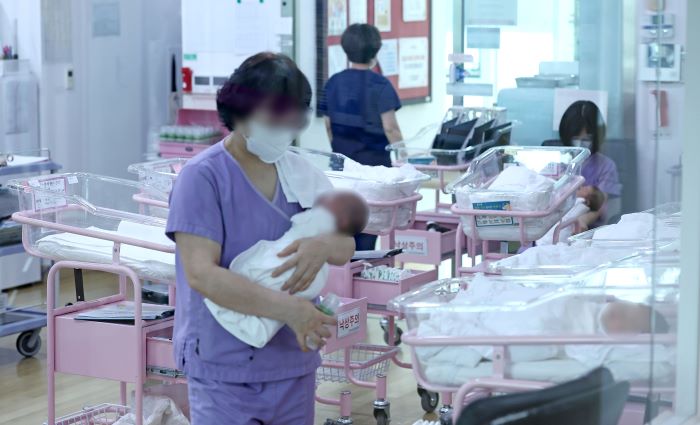SEJONG, Jan. 4 (Korea Bizwire) –A recent study has revealed that housing prices are the most significant factor affecting the decision to have a first child, while the cost of private education becomes more influential for subsequent children.
The study on future birth rates in South Korea showed that the factors most affecting the decision to have children include the general atmosphere of childbirth (previous year’s birth rate), housing prices, and the rate of women’s participation in the economy, in that order.
According to the report “Diagnosis of Low Birth Rates and Directions for Real Estate Policy” released by the Korea Research Institute for Human Settlements (KRIHS) on January 3, housing prices (purchase and rent) accounted for 30.4% of the decision-making factors for the first child. This was followed by the previous year’s birth rate at 27.9% and private education costs at 5.5%.
For the second child, the influence of housing prices decreased slightly to 28.7%, while the impact of private education costs increased to 9.1%. The previous year’s birth rate had an influence of 28.4%.
The study, which analyzed birth rates from 2009 to 2022 alongside housing and rental prices, private education costs, economic growth rate, unemployment rate, per capita income growth rate, and women’s participation in the economy, indicates that for the third child, the influence of housing prices further declined to 27.5%, and private education costs increased to 14.3%.
Researcher Park Jin-baek from the KRIHS explained that the findings suggest the importance of housing policy support to encourage the birth of the first child and private education policy support for the birth of additional children.
The study further highlighted the need for differentiated policies for the first, second, and third children to boost birth rates.
Looking ahead, the study found that for the first child, the previous year’s birth rate would have a 76.2% influence until 2025, with housing prices at 16.7%, women’s economic participation at 3.9%, and private education costs at 1.5%. This suggests that the general atmosphere of having children is a key determinant of future birth rates.
For the second child, the future birth rate factors until 2025 include the previous year’s birth rate at 59.8%, housing prices at 16%, women’s economic participation at 12.8%, and private education costs at 6.4%.
These findings underscore that policies focused on stabilizing housing for households of childbearing age and ensuring job security for women should be central to enhancing birth rates.
The Korea Research Institute for Human Settlements recommends expanding special housing supply for families without homes and considering additional application points for housing lotteries.
Park suggested that expanding housing supply, such as equity-accumulating housing for financially constrained newlyweds, could allow them to acquire homes with minimal initial capital while benefiting from housing price increases.
Additionally, the institute proposes considering the expansion of acquisition tax exemption for first-time homebuyers and introducing a system that exempts acquisition tax twice in life during marriage, childbirth, or changes in family size.
M. H. Lee (mhlee@koreabizwire.com)








